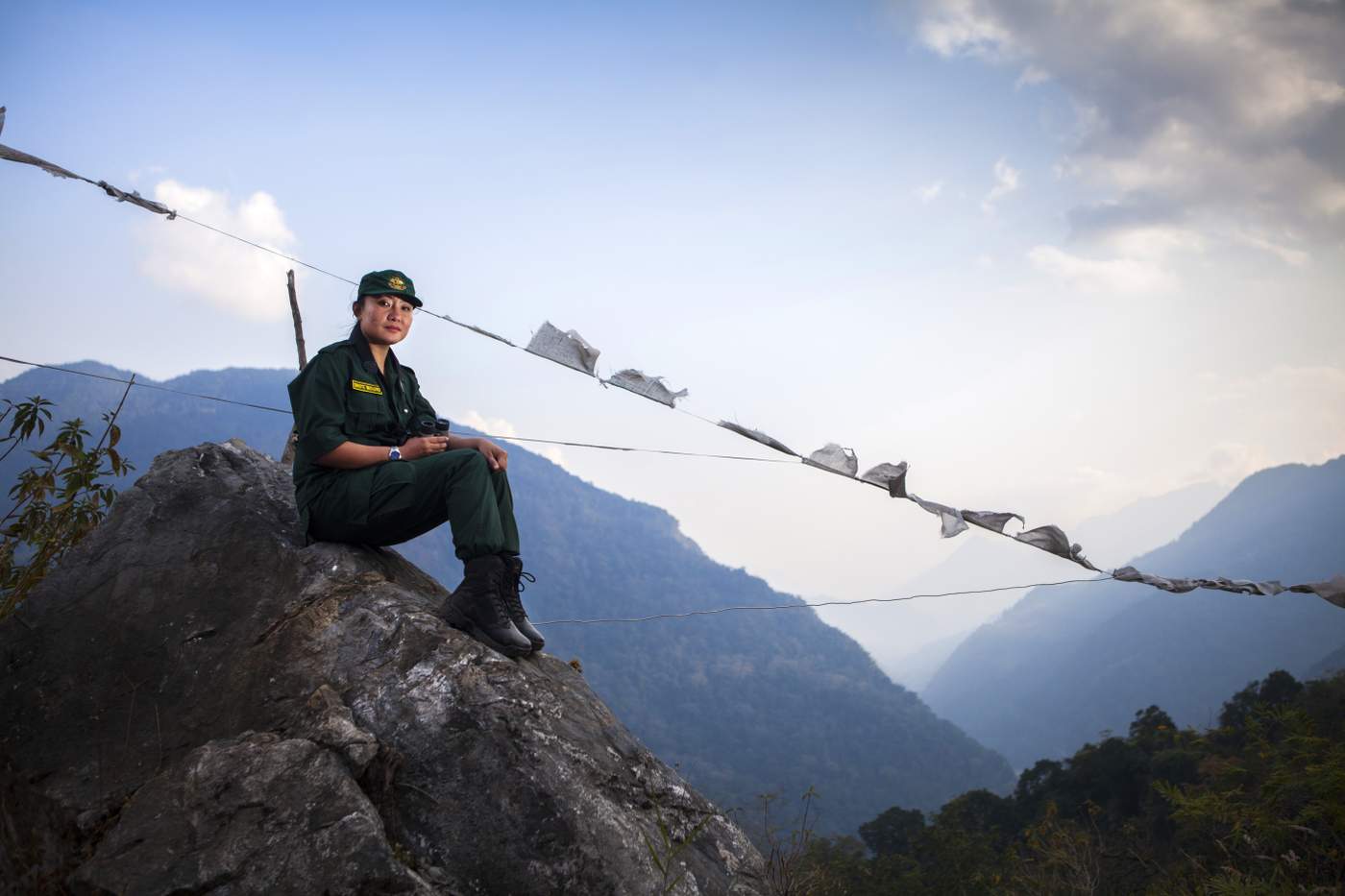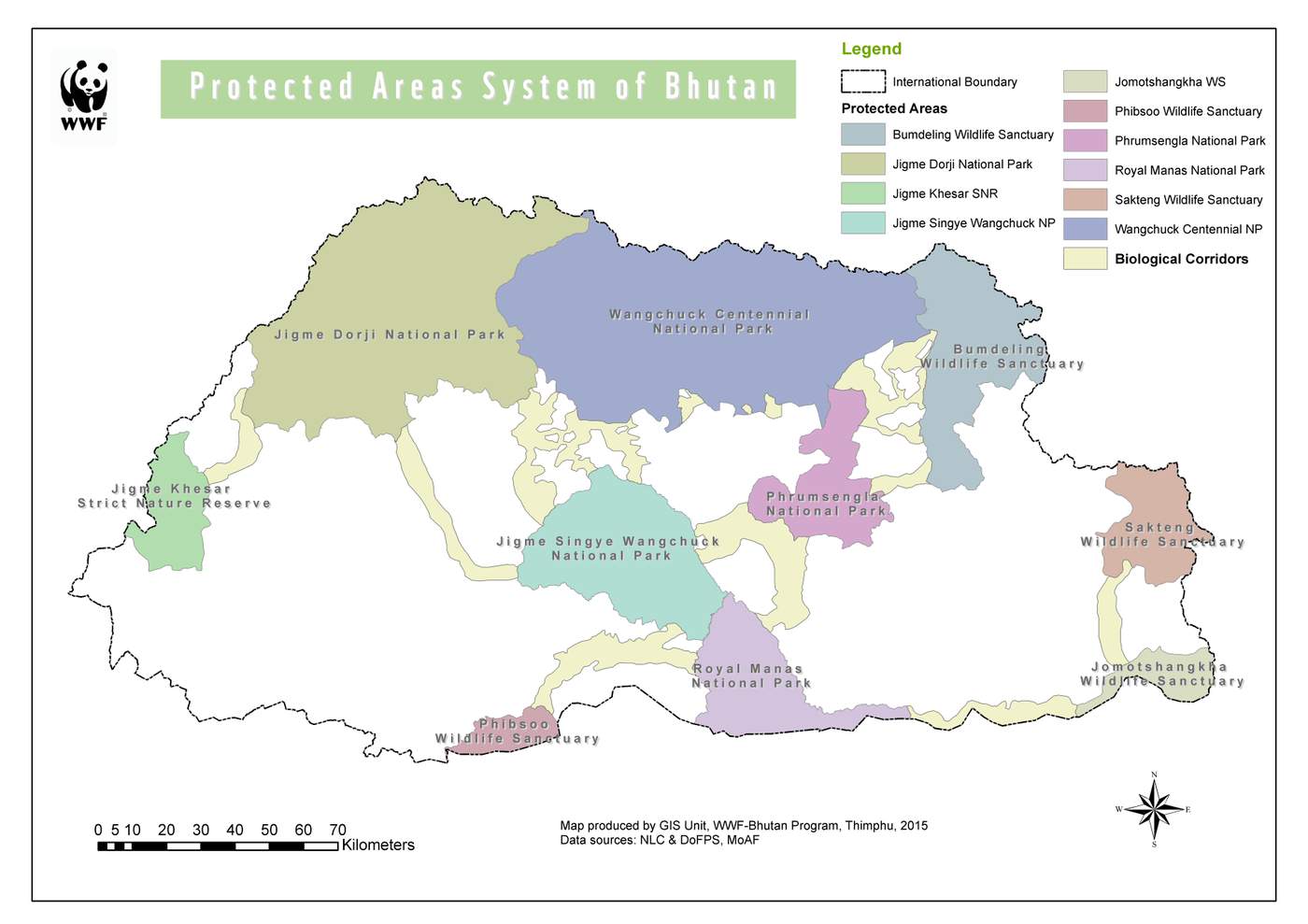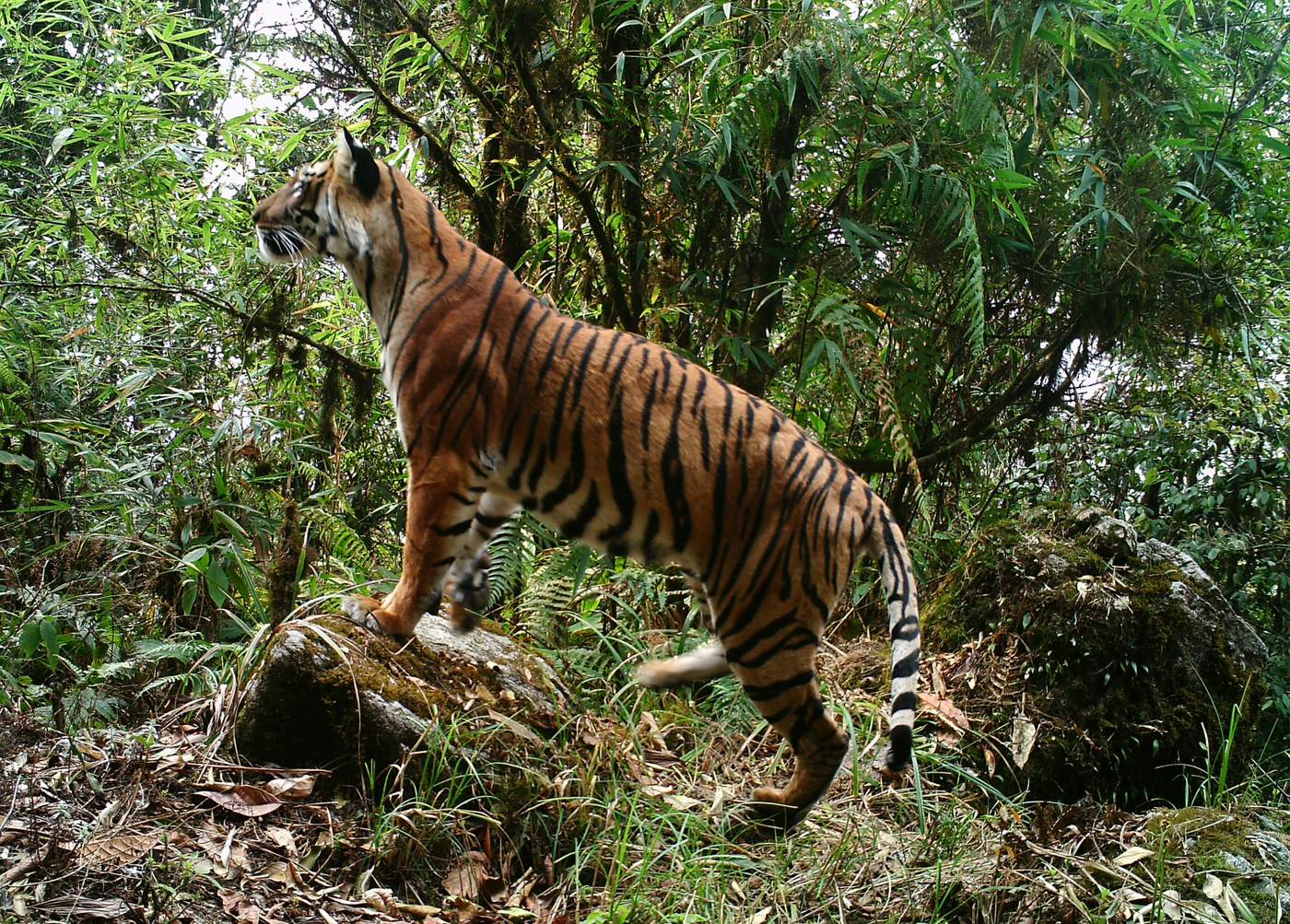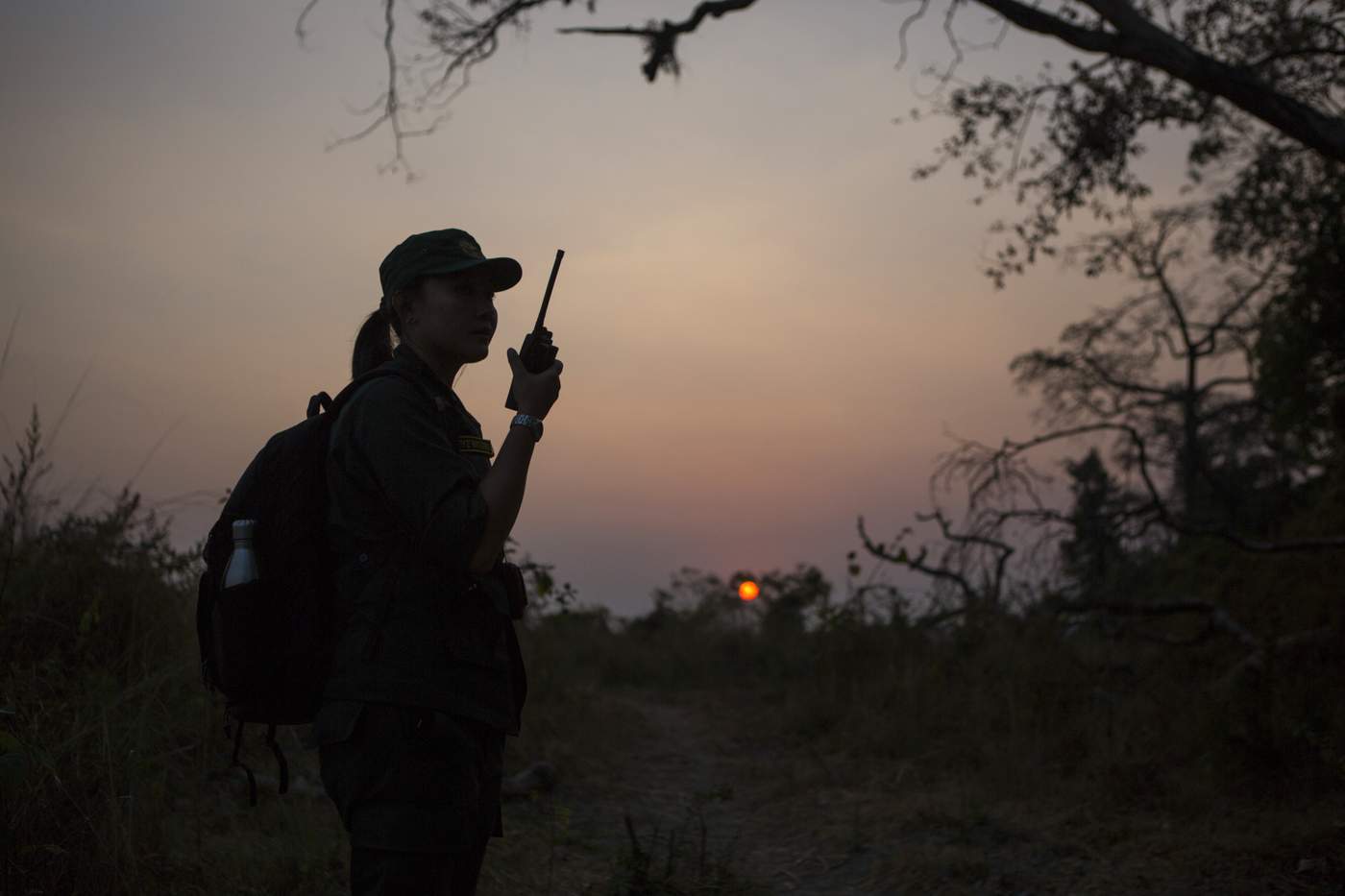"My name is Singye Wangmo. Singye means lion and Wangmo means powerful, so in short my name means powerful lion."
Deep in one of Bhutan's largest and most biodiverse national parks, a woman softly treads the undergrowth. Her backpack, weighed with the day's supplies, tugs on the green camouflage of her weathered uniform. She knows this landscape, and the hidden dangers it possesses, like the back of her hand. Eyes sharp, ears finely tuned, she deciphers the source of every forest murmur, each rustle of nearby branches.
Once she thought she was going to die here. Now she is more fearless than ever.
This is Singye, the Tiger Protector.

One of only a few female forestry officers working in Bhutan, 31-year-old Singye spends weeks at a time in the field protecting the wild tigers and other diverse wildlife that reside in Royal Manas National Park.
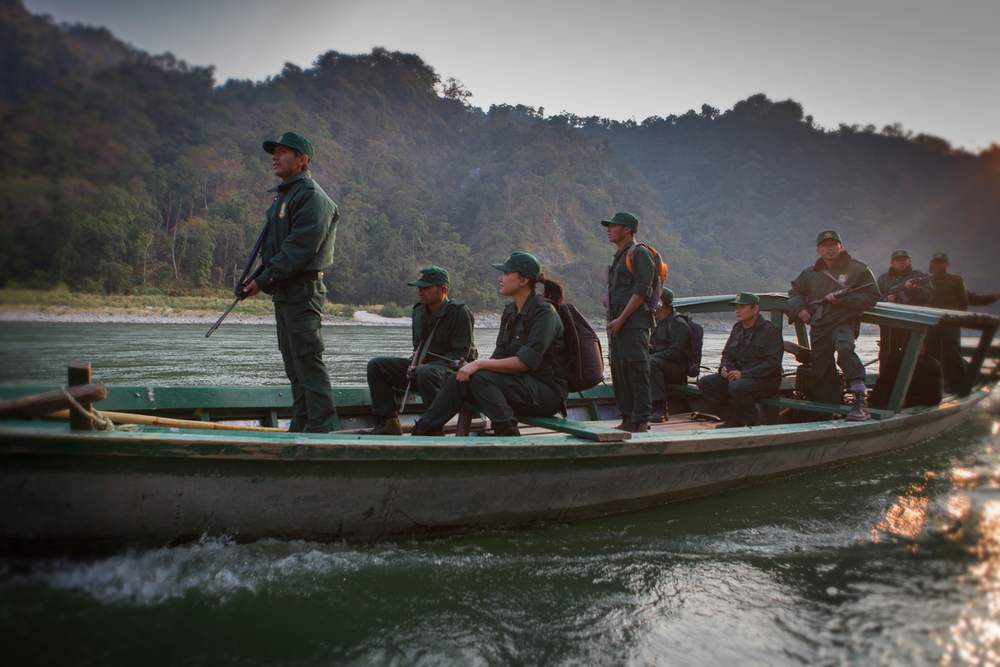
Singye Wangmo, Senior Forestry Officer at Royal Manas National Park, leads her team of rangers on boat patrol.
Leading a team of 30 male rangers, Singye’s role involves the monitoring of tigers through camera traps, conducting surveys on foot and the constant patrolling of known poaching hot spots. Her team are armed. The threat from poachers and timber smugglers is ever-present.
Fascinated with tigers from childhood, working to protect these big cats in their forest sanctuary is truly a dream come true for Singye, despite the dangers.
"Studying and saving wildlife has been my ruling passion from a young age. Getting to work in Royal Manas National Park helped me to reconnect with that passion."
Singye and her team are based in Royal Manas National Park, a 1000 sq km lush tropical wilderness found in the Himalayan foothills, alongside Bhutan's southern border with India. Considered the 'conservation showpiece of the Kingdom', the park is home to diverse habitats, ranging from lowland tropical forests to rugged, mountainous terrain. This isolated protected area, where only around 5,000 people live in remote villages, is a sanctuary for a rich abundance of wildlife. Over 400 species of bird and iconic mammals, such as the clouded leopard, greater one-horned rhino and Asian elephant live in the park.
In three years working within Royal Manas, Singye has never seen the park's most enigmatic of species, the endangered Bengal tiger. Monitoring through camera trapping and tracking pugmarks (paw prints) provides crucial glimpses into the notoriously elusive tigers' movements and behaviour.
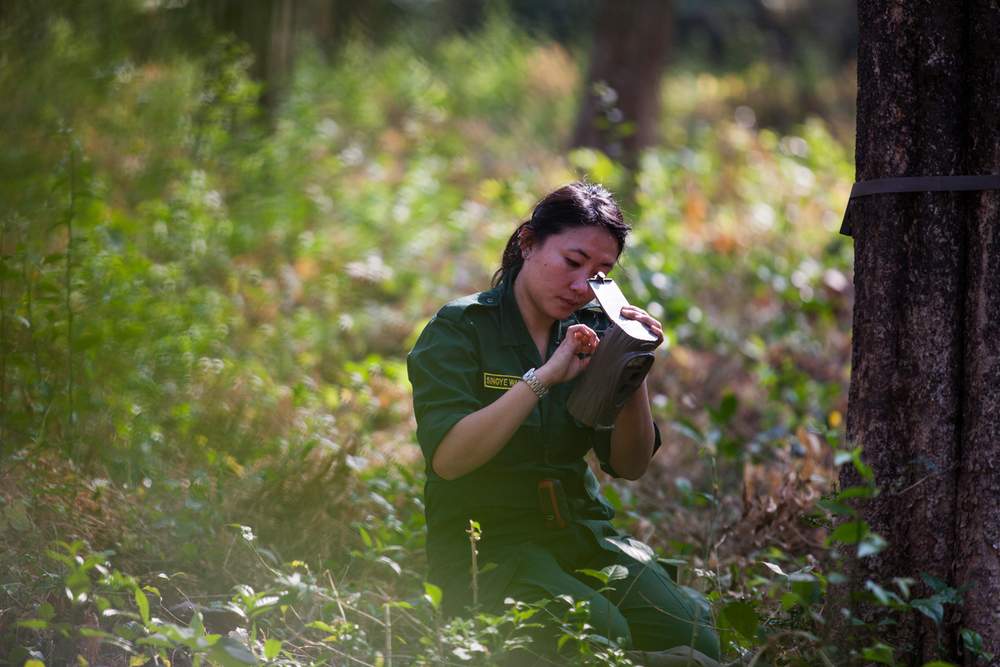
Singye installs a camera trap to monitor tigers.
"Once you’re in Manas there is nothing. There is nothing except your work. You’re completely disconnected. "
Singye spends weeks at a time trekking the tangled paths of the park. On her field trips there is no mobile phone reception or internet connection; the only lifeline to the outside world is an emergency satellite phone. She's accustomed to bidding frequent farewells to her family and husband in the neighbouring town of Gelephu. And although she misses them on patrol, Singye enthuses about the benefits of working in this remote environment.
"You get to do your work, just work, and that is sort of an enriching experience. You get a peace of mind, you get to concentrate."
Tourism in Bhutan was only initiated in 1974, when the doors were finally opened on this unique country after a policy of isolation. As a result, Bhutan's cultural heritage is well preserved and relatively undiluted from outside influences.
Tigers are deeply rooted in the religious and cultural tradition of Bhutan. Legend has it that Guru Padmasambhava, who is said to have brought Buddhism to the country, rode on the back of a flying tigress to a sacred place on a cliff, now home to the revered Paro Taktsang temple complex, or 'Tiger's Nest'.
Tigers are viewed as a symbol of great power and recognised as one of four ‘protector animals’ in the Tag Seng Chung Druk quartet (tiger, snow lion, garuda and dragon) said to safeguard citizens from all obstacles. The tiger, representing 'confidence' is the only living creature; the others mythological.
From local cafes to grand temples, images and artwork of tigers adorn walls and take pride of ornamental place. In her own home, Singye's altar room features a picture of Guru Padmasambhava on the legendary tigress. This is a species held in the highest regard and this respect has helped shape the country's conservation efforts.
"Our deep cultural and spiritual roots in Buddhism, that revere all forms of nature and sentient beings, has helped promote and maintain overwhelming support for tiger conservation."

Buddhist beliefs and practices are intrinsically linked to Singye's work protecting tigers. The influence of religion and spirituality is ubiquitous. She prays for protection in the local temple in Gelephu; her route to Royal Manas is lined with the fluttering blessings of multicoloured prayer flags and her whispered scriptures precede each day's work in the park.
"Tigers are our pride. If we lose tigers, we lose our cultural and spiritual values. If animals are not there somewhere down the line we are losing ourselves as well."
Moments in the field have tested Singye's prayers for protection. On a routine patrol in 2015, the forestry team came face to face with their biggest threat. For a brief second Singye took in the scene of the camp they had just disturbed. A large group of armed poachers stared back at her: "They were huge in numbers and we were in a small group, it was really really scary." Luckily the sight of the team's more sophisticated weaponry was enough to send the poachers running. Singye was unscathed, but not unshaken.
"Just for a fleeting moment, I thought I was going to die."
This encounter might have been one of the scariest of her life, but it only served to reinforce Singye's confidence: “Before, I had doubt and misgivings about my capability. But I maintained my composure, so now I am more fearless.”
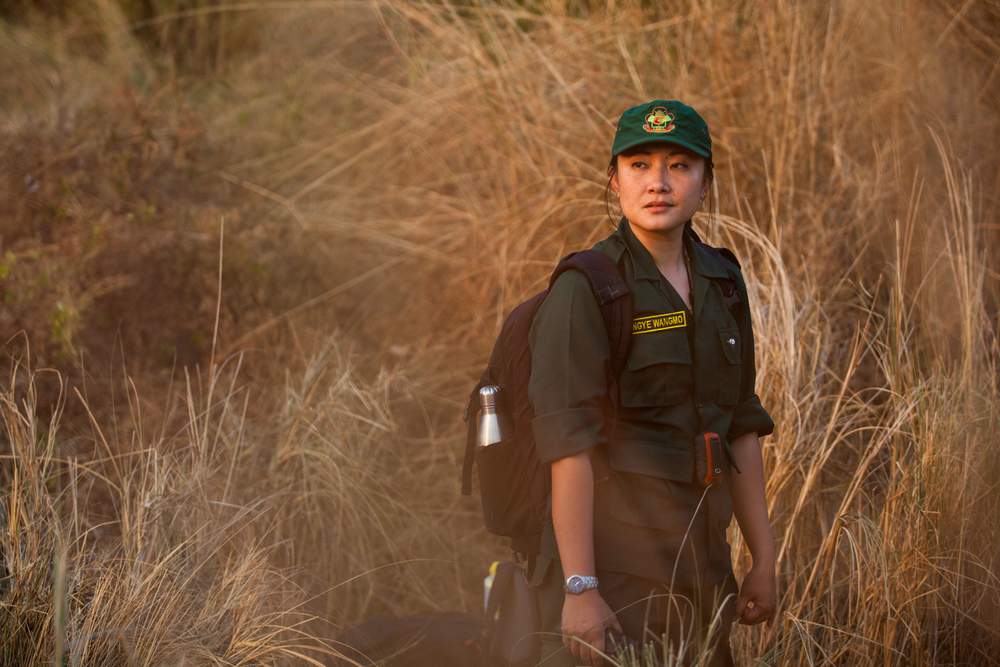
Royal Manas National Park's close proximity to the Indian border makes it vulnerable to transboundary poaching groups and timber smugglers. Poachers often enter the park and can remain hidden in the dense forest cover for weeks.
The illegal wildlife trade is estimated to be worth around £15 billion per year and is the 4th largest illegal trade after drugs, people and counterfeiting. The efforts of the Bhutanese Government and teams like Singye's are helping to control the threat, but, with the stakes so high, it is an ongoing struggle.
"Poachers are very ruthless, they are dangerous. No matter how much we patrol the area they will keep coming back to carry out illegal activities."
And dangers manifest in other forms. The terrain becomes treacherous with flooding and landslides during the monsoon season. The forestry team must carefully adapt their patrol routes and sometimes find their efforts completely hampered.
"At times it is mentally and physically challenging, but such experience makes you a stronger person. When people say you cannot – especially as a woman – it’s very difficult, you need to prove it."
Despite the risks, Singye has remained determined throughout three years of work in this diverse environment: "Our future depends on wildlife and the forest, so we need to be strong, we need to be brave, we need to fight against poachers."
"Tigers are at the crossroads of survival and extinction. If we don’t act now, we are going to lose tigers very soon. We need to stand up and be the voice for the animals."
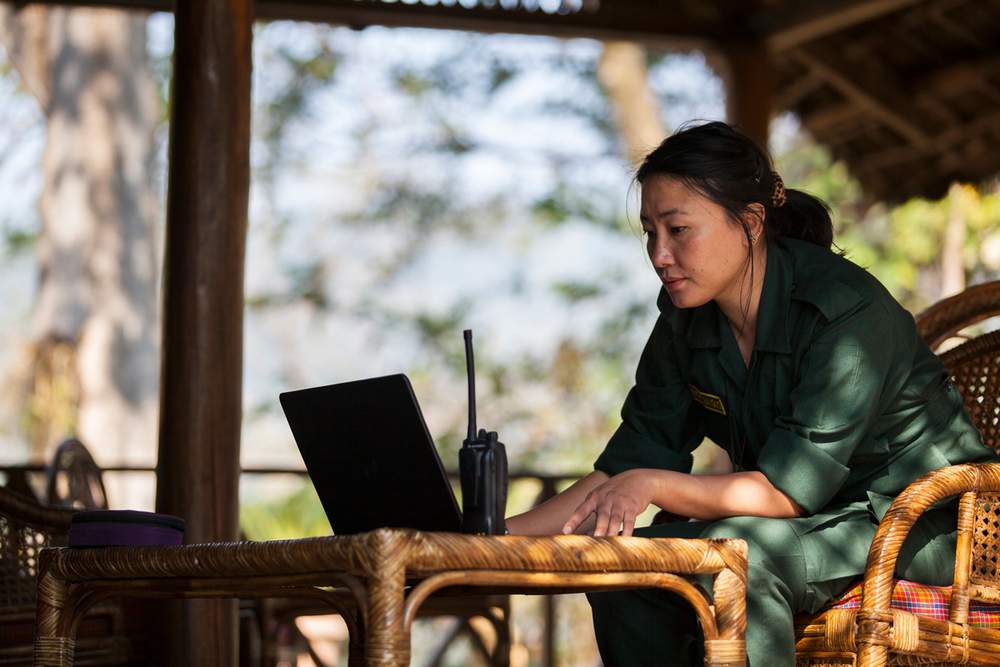
Singye reviews images from camera traps.
Her love of tigers and the need to constantly monitor their numbers keeps Singye coming back to the park. If tiger populations aren’t surveyed regularly, data will be lost and Singye’s team would be unable to gauge the success of their efforts to protect and increase the wild tiger population.
The introduction of camera trapping technology has been pivotal in effective monitoring work and in the fight against wildlife crime. Images from camera traps, small movement triggered cameras tied to trees around the park, provide insight into tiger numbers, routes and behaviour. But they also offer a unique window on the hidden world of poaching.
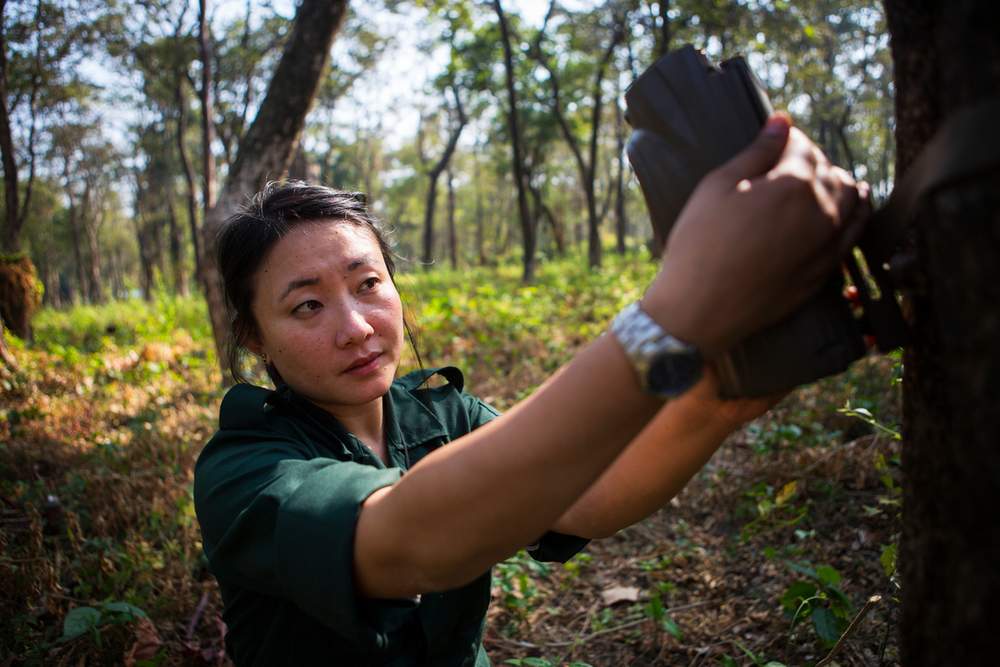
Singye fixes a camera trap to a tree in Royal Manas National Park. Camera traps are a vital tool in helping to measure tiger population density and movement of species.
Poachers caught in possession of tiger parts often lie about the source and age of the tiger to avoid prosecution. But camera trap images are high definition and help identify individuals by the striped pattern unique to each animal. By cross referencing seized parts with camera trap imagery, Singye and her team can prove beyond doubt that the tiger has come from Royal Manas and can start legal procedures.
"The offenders come up with so many stories, but the camera trap data doesn’t lie. The camera trap has been a breakthrough not only in understanding the ecology of tigers, but also in helping us to streamline our patrolling efforts."

The local work of forestry officers like Singye is contributing to a wider goal. In 2010, global wild tiger numbers were at an all-time low and the tiger range governments agreed that innovative action was needed. Collectively they committed to double wild tigers numbers by 2022, supported by WWF. In 2016, for the first time in conservation history, wild tiger numbers showed an increase. In 2010 there were estimated to be as few as 3,200 tigers in the wild; now there are around 3,900.
And conservation efforts in Bhutan are keeping pace. The last tiger survey confirmed the presence of tigers for the first time in three Wildlife Sanctuaries, one National Park and four Forest Division areas. In 2016, Bhutan was the first country to embark on a national roll out of SMART patrolling, a critical anti-poaching tool. This is a crucial step in helping rangers protect tigers and other wildlife. And just this year, the Prime Minister of Bhutan launched three significant documents which enable the country to continue to support healthy wild tiger populations.
"The fight to save tigers is our collective responsibility. Human beings are the answer to saving tigers. You and I are the answer."
There are around 30 wild tigers roaming Royal Manas National Park and in three years of patrolling this abundant sanctuary, Singye has never encountered one. Spotting tiger pugmarks, or catching that first glimpse of a new camera trap image is enough to excite and inspire her: "It's an overwhelming feeling. I feel very happy to know tigers are there in the forest, breeding well, thriving in the wild. You feel your work has been worthwhile."
But how would Singye feel if she finally spotted the big cat she has dedicated her life to?
"It will be a surreal moment for me. If I happen to have the privilege of seeing a tiger in the wild one day it will be the happiest moment of my life."

